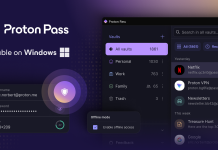
Todist has today announced new Integrations with Evernote, Google Calendar & Github.
The new integrations come as the company looks to diversify itself and become a one stop shop when it comes to organising you workflow. Each integration with Evernote, Google Calendar & Github work differently ad we will have a look at each of them individually.
Evernote
Whilst Evernote is a great app, it can be tricky to keep track of what information you need to take action on and when.
With the integration with Todoist, you need to enable the integration and choose the Evernote notebooks you want to turn into Todoist projects. To turn an Evernote note into a Todoist task, simply add an Evernote reminder. The note title will appear as the task name with a link right back to the original note contents. Complete the task in Todoist and the Evernote reminder will automatically be marked as done too.
Google Calendar
With the integration with Todoist, you can see your Todoist tasks for the day, week, or month ahead in your Google Calendar with instant synchronisation. To enable this, all you need to do is flick the switch to enable integration and any Todoist tasks with due dates and times will appear right in your calendar. If you make any changes to to the event due date and time, this will automatically sync back to your Todoist task.
Though it is important to note that tasks with a start and end time in Google Calendar will appear with only the start time in Todoist. For example, “Check email from 10am to 10:30am” in Google Calendar will appear as “Check email at 10am” in Todoist.
GitHub
Your GitHub to-do’s can now be integrated within Todoist, with new projects created within Todoist with all of the issues that are assigned to you. Any task you complete in Todoist will automatically be marked as done in GitHub and vice versa.
Tidiest has also announced that with the new integration and services, that it has officially launched its first ever Todoist Global Developer Challenge which begins today.
The app is calling on all hackers, developers and designers to show them what they can come up with and build, showing off their talents and have the chance on winning cash prizes.
Todoist is offering $10,000 for the most inventive, well-designed, and exceptionally useful applications built on top of the Todoist platform. The winner will also have the ability to be featured on the Todoist blog and their integrations will be published in the official curated collection of Todoist PowerApps.
The factors Todoist think will make a killer application include:
Integration: Does the application build on the unique functionality offered by the Todoist API?
Design: Is the application polished, visually appealing, and easy to use?
Creativity: Is the application unique and/or innovative?
Wow factor: Does the application have exciting potential?
The judges which will overlook each entrant and their apps & features include Zee M. Kane – former CEO of The Next Web, Mike Vardy – Writer, speaker, and Founder and President of Productivityist and Rodrigo Aliste – CTO at Prey Project.
To participate in the in the developer challenge, you can be anywhere in the world and will need to:
Go to developer.todoist.com to register your API key, and review the documentation on programming using the Todoist API.
Register an account and create a project for your idea on the Todoist Developer Challenge webpage and start building.
Hack with a flexible schedule, from home, in your pajamas at 3 a.m. if you choose!
Submit your project for final review before the July 6th deadline.
You can check out the judging criteria via the Developer Challenge landing page.
If you’re not a hacker or developer, you can help promote the Todoist Developer Challenge on Twitter, Google+, or Facebook to win one of 10 exclusive Todoist t-shirts. Every Tuesday, Todoist will choose a random winner who has spread the word about the contest using the #Todoist and #DevChallenge hashtags.
You can then head over to the Todoist Developer Challenge submissions page to upvote your favorite ideas, make suggestions, and follow developers’ progress.



